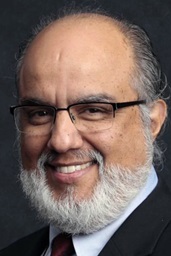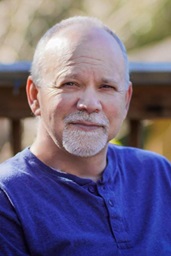Over the past two decades, The United Methodist Church has become well known for expertise in disaster case management.
For the Sandy recovery, the Greater New Jersey Annual (regional) Conference and the United Methodist Committee on Relief coordinated nine disaster case-management training sessions, with 226 participants, at no cost to 16 organizations, including Catholic Charities, American Red Cross and Salvation Army.
Anatomy of a United Methodist disaster response
- The work of many hands
- Different needs everywhere
- Management the key
- Volunteers a lifeline
- ‘Love Methodist volunteers’
- Mission teams needed
To Volunteer:
- New Jersey
- New York
- Crisfield, Md. (Teams must coordinate with the Crisfield Area disaster coordinator.)
“UMCOR is the gold standard. We really are following the UMCOR protocols and using them to do our case vetting,” said Bobbie Ridgely, director of A Future with Hope, Greater New Jersey’s Sandy relief organization.
(An UMCOR video shows how case managers work “hand-in-hand” with survivors.)
Case managers take referrals from the long-term recovery groups that are active in each county, from other case managers “or they just come,” Ridgely said. “What we found in Atlantic City in particular was once we got working down there, they would come to us.”
Guidelines are based on the income guidelines for the Department of Housing and Urban Development.” Many of the clients would be considered lower middle class, but, Ridgely added, “We don’t ask people to sell their assets. We don’t asked people to go into debt to rebuild.”
New Jersey has Sandy clients in all stages of recovery, said Liz McDevitt, disaster case manager supervisor for A Future with Hope, who oversees two case managers in Highlands, two in the office at Lacey United Methodist Church in Forked River and one in the Atlantic City Long Term Recovery office.
A rebuild averages four to five months but could take up to a year. “Each case is unique,” McDevitt explained. “You have to look at everybody in the home.”
On Long Island, a client disaster advocate with a master’s degree in case management and training through the Federal Emergency Management Agency has been hired to interface directly with homeowners, said Peggy Racine, site coordinator. The advocate particularly will seek out those who are underinsured or have no insurance.
“Funds are limited so we have to be very careful,” Racine said. “We want to reach the neediest of the needy. That’s our goal.”
Other issues facing responders and homeowners include:
Density
Population density means more people hurting and fewer resources, New Jersey Bishop John Schol pointed out. Particularly in the period immediately after Sandy, when 2.7 million across the state were without electricity, “the density just made it very, very challenging to get things done.”
Mold
“Homeowners (in Brooklyn) did not know anything about mold,” noted Gillian Prince, with the New York Conference disaster response office in Brooklyn.
With any flood event, explained Greg Forrester, UMCOR’s U.S. disaster response coordinator, “you get things torn down as quick as you can to start the drying-out process.” For those whose homes were open to the elements and who had no furnace, it was a difficult task.
“We have been looking at a bumper crop of mold,” said Jim Truitt, when he led a volunteer team from Washington State to Crisfield, Md., last December. “We are trying to communicate to people that mold really is a problem now, and it will only get worse.”
Lingering relief needs
“They say that it (emergency relief) lasts 10 weeks, but even today (in September) we still walk into homes…that have not been properly cleaned out,” said the Rev. Lou Stragala, New Jersey construction manager.
Funding delays
Long-term recovery groups have to worry about who is receiving or is eligible for funding or services, said Forrester. When a new source of funding is announced, “you have to basically stop what you’re doing to see if they qualify for additional funds.” That has happened with United Methodist clients and potential clients in both New York State and New Jersey.
* Bloom is a United Methodist News Service multimedia reporter based in New York. Follow her at http://twitter.com/umcscribe. Contact her at (646) 369-3759 or[email protected].
Hurricane Sandy
Fall 2012
- Up to 500 a day turning to NJ church for community space (Nov.)
- New Jersey United Methodists tackling the long term after Hurricane Sandy (Dec.)
Hunger spiked when disaster struck (Dec.)
Winter 2013
- Long Islanders get Sandy relief (Jan.)
- After Sandy, Maryland town quietly suffers (Jan.)
- Sandy giving now at $6.1 million (Jan.)
- UMCOR Sandy relief receives boost (Jan.)
- UMCOR: Walking survivors through recovery (Jan.)
- Sandy’s toll: Worse than you think (Jan.)
- New York Annual Conference tells its story (Jan.)
- Belmar pastor offers glimpse of post-Sandy reality (Jan.)
- Surviving Sandy in Cuba (Feb.)
- More teams needed for Sandy recovery (Feb.)
- NY Surviving Sandy groups (Feb).
- Volunteers come from near and far (Feb.)
Spring 2013
Summer 2013
Fall 2013
Like what you're reading? Support the ministry of UM News! Your support ensures the latest denominational news, dynamic stories and informative articles will continue to connect our global community. Make a tax-deductible donation at ResourceUMC.org/GiveUMCom.



